Reading Time: 8 minutes
Note: This article first ran in Howey Politics Indiana. It has been edited slightly since it was first published to reflect two omissions pointed out by former State Rep. Mike Murphy and journalist Adam VanOsdol.
As the United States begins transitioning presidential administrations, Indiana finds itself breaking even with home state representation in the Presidential Cabinet. While two Hoosiers are leaving the White House with President Trump–Vice President Mike Pence and Secretary of Health and Human Services Alex Azar–Hoosiers Ron Klain (as White House Chief of Staff) and Pete Buttigieg (as Secretary of Transportation) will soon be Cabinet members in President-elect Biden’s administration.

Given the influence of Hoosiers on both sides of this transition, it raises the question: which other Hoosiers have held such prestigious positions? As it turns out, there isn’t a great source for finding a historical list of Presidential Cabinet members by state, and the offices considered Cabinet-level have fluctuated over time. In order to better account for the history of Hoosiers in the life of our nation, I’ve taken the time to build such a list by combing through the annals of American history, making a list of which offices were considered Cabinet-level at various points in time, and then researching the backgrounds on those who were appointed to the relevant offices. Let’s look first at the offices which are considered Cabinet posts.
Vice Presidents (6 Hoosiers)
The most obvious office is that of Vice President, of which Pence is the sixth from Indiana. With our outgoing Vice President hailing from Indiana, there’s little need to cover the history of Hoosier Vice Presidents here because those stories have been constantly written for the past four years.
Heads of Executive Departments (17 Hoosiers)
Article II, Section 2 of the U.S. Constitution doesn’t use the word “Cabinet”, but it does establish that the heads of each executive department are appointed by the President and confirmed by the Senate to advise the President “upon any Subject relating to the Duties of their respective Offices.” These officials came to be known as the Cabinet under George Washington, and since the Presidential Succession Act of 1886 these positions have made up the bulk of the Presidential line of succession (named in the order of the creation of their respective departments).
There are currently 15 executive departments, of which 14 are headed by the “Secretary” positions we generally think of when discussing presidential cabinets, and the other is led by the Attorney General. Additionally, there are five executive departments that no longer exist (the Departments of War, the Army, the Navy, and the Air Force, which were all headed by Secretaries, but have not been considered cabinet-level departments since the military reorganization of the late-1940’s that created the Department of Defense; and the Post Office Department, which was headed by the Postmaster General and was considered a cabinet-level department from 1872 until it was made an independent agency in 1970).
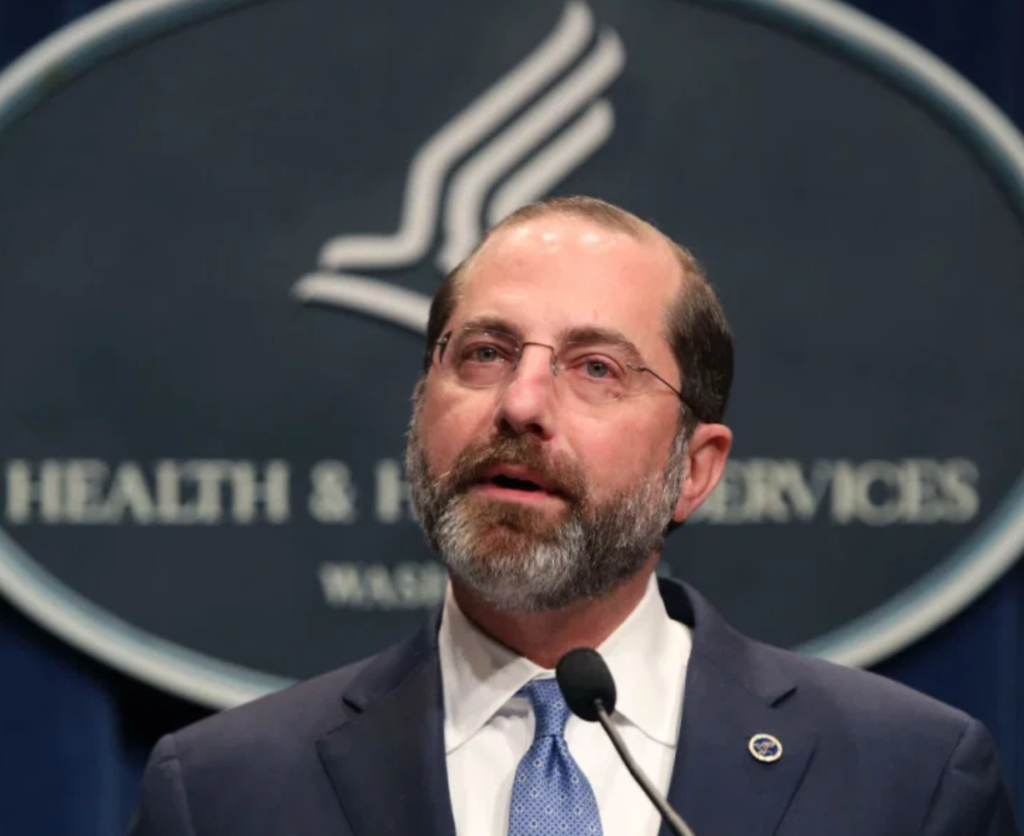
Sixteen Hoosiers have headed executive departments (some led multiple departments at different points in time), and this is where Azar and Buttigieg fit in. This includes four Agriculture Secretaries (one as an Acting Secretary); four Postmasters General; three Treasury Secretaries; two Secretaries of State; two Health and Human Services Secretaries; two Interior Secretaries; one Attorney General; and one Naval Secretary. Upon Senate confirmation, Buttigieg will become the first Transportation Secretary to come from Indiana.
Cabinet-level Officials (5 Hoosiers)
Finally, there are the Cabinet-level positions. Unlike the executive department heads, these positions aren’t considered to be Cabinet posts by default. Instead, each President designates various positions as important enough to national interests to serve in this important advisory capacity. Because each President may have a different view of which positions rise to this level of importance, this is where we see the fluctuation in Cabinet-level jobs that makes compiling a historical list a bit tricky.
In general, though, this tends to include many positions in the Executive Office of the President, an organizational unit that has only existed since 1939. Key positions generally considered cabinet-level include the White House Chief of Staff, a title that has only existed since 1961, and only consistently used since 1979; the Director of the Office of Management and Budget (OMB), a position created in 1970, and which every President since has filled as a Cabinet-level post since; and the Director of National Intelligence (DNI), which similarly has always been filled as Cabinet-level since its creation in 2005. Other positions, particularly those outside of the Executive Office structure, can be harder to follow. For instance, Hoosier Bill Ruckelshaus was appointed the first Administrator of the Environmental Protection Agency (EPA) in 1970 by Richard Nixon, and served in the same position after 1983 for Ronald Reagan–but he never served in a Presidential Cabinet because this position wasn’t elevated to Cabinet-rank until 1990, where it has remained. Meanwhile, the position of Ambassador to the United Nations has pinballed back and forth, as it was considered Cabinet-level under Ronald Reagan, Bill Clinton, and Barack Obama, but not under George H.W. Bush, George W. Bush, and Donald Trump.
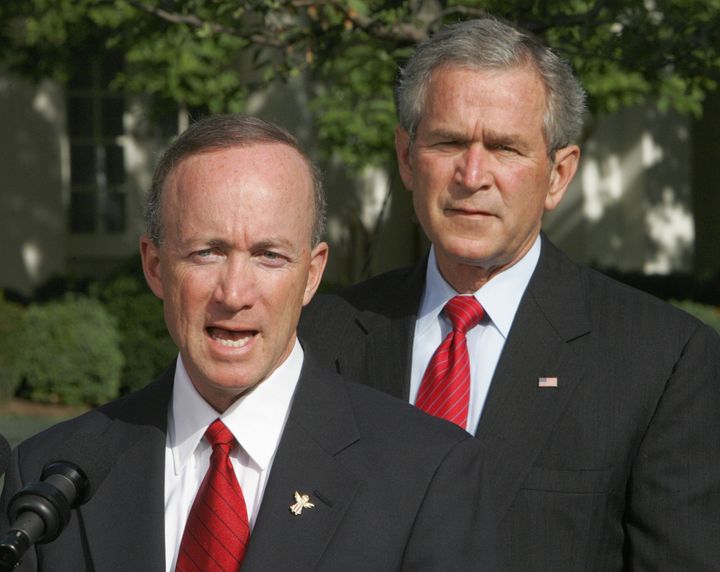
Four Hoosiers fit the bill for these offices, including two OMB Directors, two Directors of National Intelligence, and a Chair of the Council of Economic Advisors. This is where Klain will fit in, and he will be the first Hoosier to serve as a White House Chief of Staff.
Facts about Hoosiers in Presidential Cabinets (28 Hoosiers total)
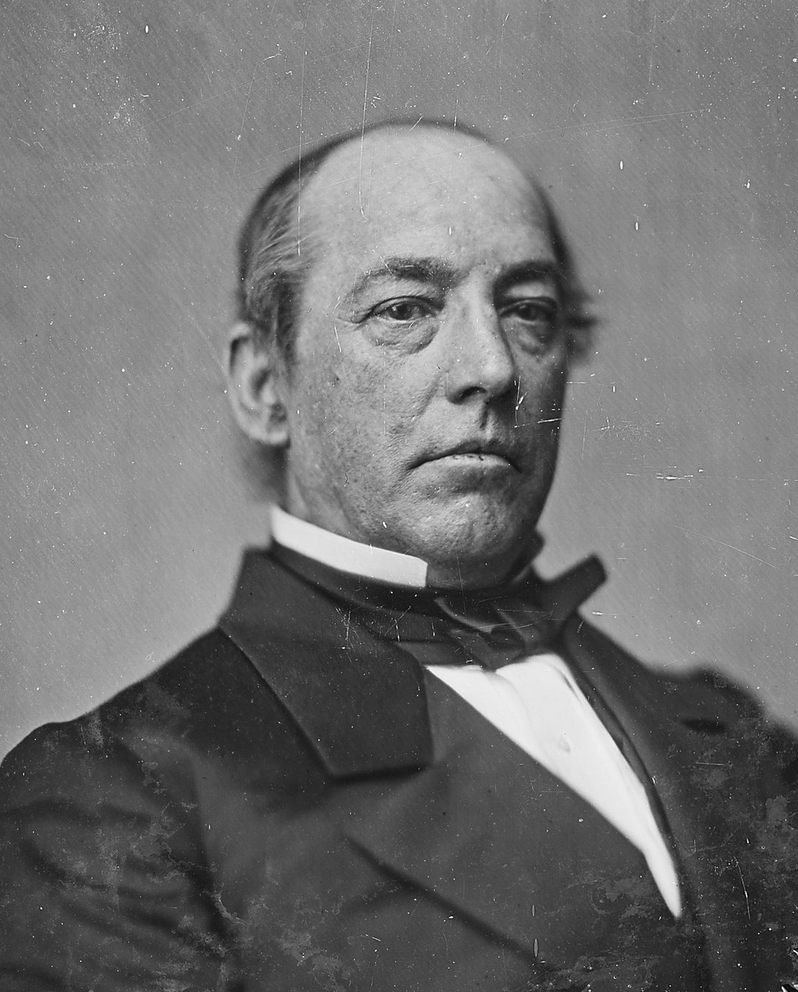
Perhaps fittingly, the first Indiana native to serve in a Cabinet post was appointed by a President with Hoosier ties. Caleb Blood Smith was elected to five terms in the Indiana House of Representatives–including two during which he served as Speaker of the House–before being elected to the U.S. House. His last term in Congress coincided with the single Congressional term of Abraham Lincoln, when both were members of the Whig Party.
A dozen years later as President, Lincoln would make Smith his first Secretary of the Interior. A year into the job, though, Smith found he had little interest in the office. He had Lincoln appoint John Palmer Usher, then serving as Indiana’s Attorney General, to be his Assistant Secretary who would carry out most of the duties of the office. A few months later, Lincoln would appoint Smith to a vacant judgeship on the U.S. District Court for Indiana, and preserved Indiana’s Cabinet representation by making Palmer the Interior Secretary.
At the start of his second term, Lincoln would add another Hoosier to his Cabinet when he named Hugh McCullough–the first and only president of the state-run Bank of Indiana, and then the first president of the Second Bank of Indiana–as his Secretary of the Treasury. He would hold this job past Lincoln’s assassination and through the entirety of Andrew Johnson’s term in office. Chester A. Arthur would appoint him to the same post for the final six months of his term in office, making McCullough the only Hoosier to serve in the Cabinets of three different Presidents.
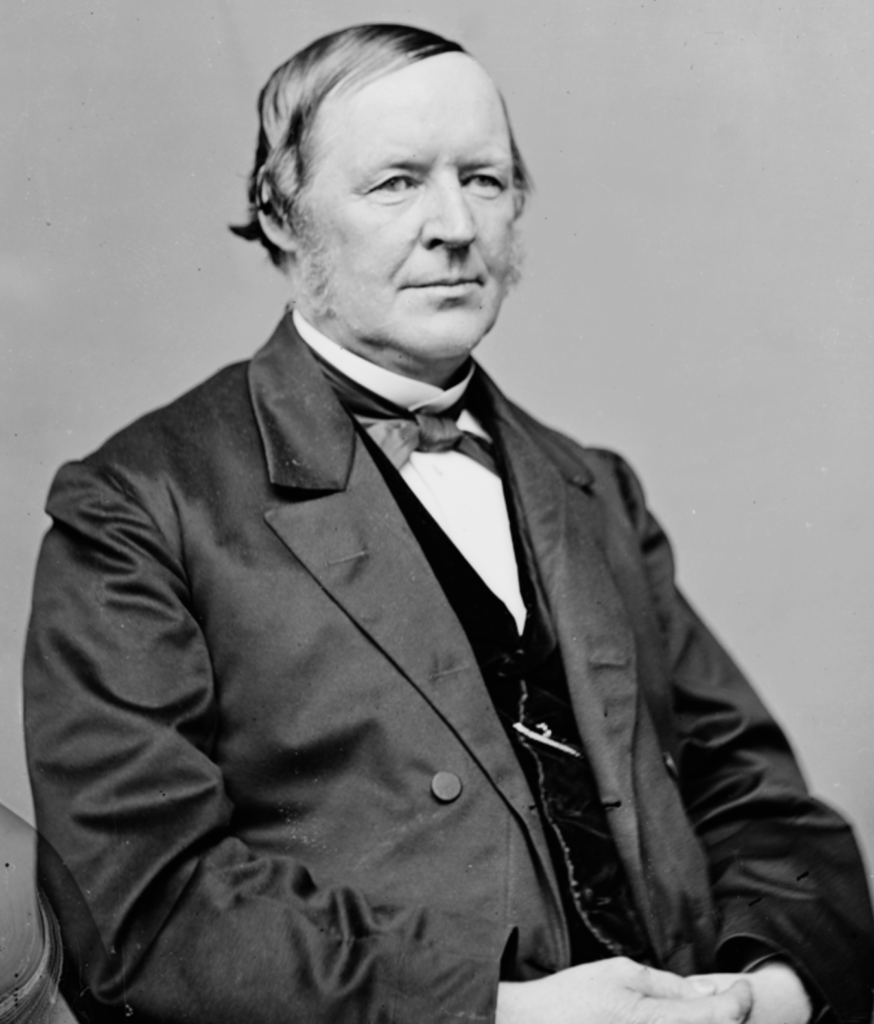
From Lincoln through Trump, 29 different men have served as U.S. President, and Hoosiers have served as Cabinet members for 22 of them (and soon to be 23 of 30 once Biden assumes the office with Klain as his right hand). But after Lincoln put three different Hoosiers in his Cabinet, no President until Trump (who in addition to Pence and Azar appointed Dan Coats to serve as DNI) would have that many again. Indiana’s sole native President, Benjamin Harrison, appointed two fellow Hoosiers to his Cabinet, including the only U.S. Attorney General from Indiana, William H. H. Miller, and the first Secretary of State from Indiana, John W. Foster.
Coincidentally, when Democratic candidate Grover Cleveland defeated Harrison in the 1892 election, he replaced Foster with Hoosier Walter Q. Gresham as Secretary of State. This is notable for a few reasons: First, Gresham was one of the most prominent and notable Indiana Republicans of the era, and his life story that culminated in being appointed to a Democratic Cabinet is worth telling on its own (which I will do soon). Second, Gresham had previously served as both Postmaster General and Treasury Secretary for Chester A. Arthur, making him the only Hoosier to serve in three different Cabinet posts.
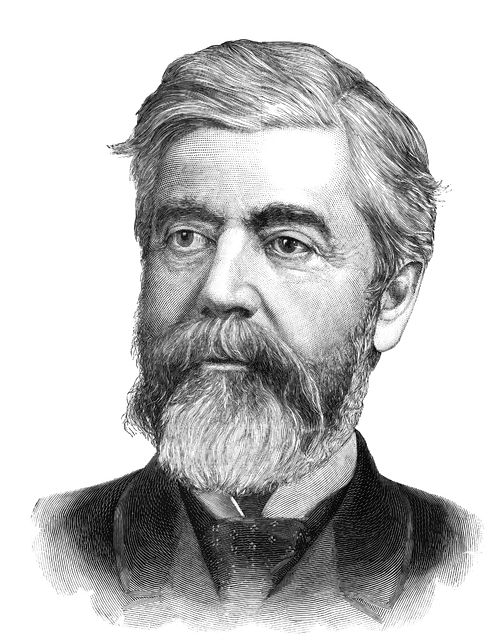
Over the next 70 years, Hoosier membership in the Cabinet would wane. Though Indiana did send two Vice Presidents to the White House in this period, there were only four executive department heads, who only served for a combined twelve years. Since Lyndon Johnson made Joseph Barr the Treasury Secretary for his last month in office, each President except Jimmy Carter has had at least one Hoosier in his cabinet. That trend will continue under Biden, as Buttigieg and Klain continue this tradition of Hoosier influence. A full list of all Hoosier Cabinet members through January 20, 2021, can be found in the table below, and a permanent and ongoing list can be found on by clicking this link.
Other Cabinet members with Hoosier ties (5 near-Hoosiers)
I’ll close by mentioning a handful of individuals I have not included on my list. In general, I’ve counted as Hoosiers those who were raised in Indiana, those who moved here in adulthood to establish themselves professionally, and those who were Indiana residents at the time of their appointment. I have not included John Hay, who was born in Salem but moved to Illinois while still a toddler. When Lincoln, a friend of Hay’s uncle, became President, he took Hay to Washington to serve as his private secretary; he would also later serve as Secretary of State for both Presidents William McKinley and Theodore Roosevelt.
Similarly, I have not included the trio of Indiana University alumni who served under President George W. Bush (Paul O’Neill as Treasury Secretary; Rod Paige as Education Secretary; and Robert Gates as Defense Secretary, a post he also held under Obama). If I had, the younger Bush would have had 5 Hoosier Cabinet members, by far the most of any President. But even without including them, the influence of Hoosiers on our federal government in recent history remains steadfast.
Chronological list of Hoosiers serving in U.S. Presidential cabinets
Note: Includes individuals who were residents of Indiana at the time of their appointment, and those who spent a large portion of their life (i.e., childhood) in Indiana; list complete through January 20, 2021
| Name | Position | Start Date | End Date | President(s) |
|---|---|---|---|---|
| Caleb B. Smith | Secretary of the Interior | Mar 5, 1861 | Jan 1, 1863 | Abraham Lincoln |
| John P. Usher | Secretary of the Interior | Jan 1, 1863 | May 15, 1865 | Abraham Lincoln/ Andrew Johnson |
| Hugh McCullough | Secretary of Treasury | Mar 9, 1865 | Mar 3, 1869 | Abraham Lincoln/ Andrew Johnson |
| Schuyler Colfax | Vice President | Mar 4, 1869 | Mar 4, 1873 | Ulysses S. Grant |
| James N. Tyner | Postmaster General | Jul 12, 1876 | Mar 3, 1877 | Ulysses S. Grant |
| Richard W. Thompson | Secretary of the Navy | Mar 13, 1877 | Dec 20, 1880 | Rutherford B. Hayes |
| Walter Q. Gresham | Postmaster General | Aug 9, 1883 | Sep 4, 1884 | Chester A. Arthur |
| Walter Q. Gresham | Secretary of Treasury | Sep 5, 1884 | Oct 30, 1884 | Chester A. Arthur |
| Hugh McCullough | Secretary of Treasury | Oct 31, 1884 | Mar 7, 1885 | Chester A. Arthur |
| Thomas A. Hendricks | Vice President | Mar 4, 1885 | Nov 25, 1885 | Grover Cleveland |
| William H. Miller | Attorney General | Mar 7, 1889 | Mar 4, 1893 | Benjamin Harrison |
| John W. Foster | Secretary of State | Jun 29, 1892 | Feb 23, 1893 | Benjamin Harrison |
| Walter Q. Gresham | Secretary of State | Mar 7, 1893 | May 28, 1895 | Grover Cleveland |
| Charles W. Fairbanks | Vice President | Mar 4, 1905 | Mar 4, 1909 | Theodore Roosevelt |
| Thomas R. Marshall | Vice President | Mar 4, 1913 | Mar 4, 1921 | Woodrow Wilson |
| Will H. Hays, Sr. | Postmaster General | Mar 5, 1921 | Mar 3, 1922 | Warren G. Harding |
| Harry S. New | Postmaster General | Mar 4, 1923 | Mar 3, 1929 | Warren G. Harding/ Calvin Coolidge |
| Claude R. Wickard | Secretary of Agriculture | Sep 5, 1940 | Jun 29, 1945 | Franklin Roosevelt/ Harry Truman |
| Joseph W. Barr | Secretary of Treasury | Dec 21, 1968 | Jan 20, 1969 | Lyndon B. Johnson |
| Clifford M. Hardin | Secretary of Agriculture | Jan 21, 1969 | Nov 17, 1971 | Richard Nixon |
| Earl L. Butz | Secretary of Agriculture | Dec 2, 1971 | Oct 4, 1976 | Richard Nixon/ Gerald Ford |
| Otis R. Bowen | Secretary of Health and Human Services | Dec 13, 1985 | Mar 1, 1989 | Ronald Reagan |
| Dan Quayle | Vice President | Jan 20, 1989 | Jan 20, 1993 | George H. W. Bush |
| Alice Rivlin | Director of the Office of Management and Budget | Oct 17, 1994 | Apr 26, 1996 | Bill Clinton |
| Joseph Stiglitz | Chair of the Council of Economic Advisers | Jun 28, 1995 | Feb 13, 1997 | Bill Clinton |
| Mitch Daniels | Director of the Office of Management and Budget | Jan 23, 2001 | Jun 6, 2003 | George W. Bush |
| Charles F. Conner | Secretary of Agriculture (Acting) | Sep 20, 2007 | Jan 28, 2008 | George W. Bush |
| James Clapper | Director of National Intelligence | Aug 5, 2010 | Jan 20, 2017 | Barack Obama |
| Mike Pence | Vice President | Jan 20, 2017 | Jan 20, 2021 | Donald Trump |
| Dan Coats | Director of National Intelligence | Mar 16, 2017 | Aug 15, 2019 | Donald Trump |
| Alex Azar | Secretary of Health and Human Services | Jan 29, 2018 | Jan 20, 2021 | Donald Trump |
